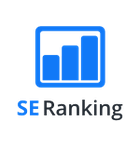Opinions expressed in this article are those of the sponsor. Search Engine Land neither confirms nor disputes any of the conclusions presented below.
The complete guide to on-page optimization
This step-by-step guide will show you how to take your on-site optimization to the next level, create top-performing pages and achieve desired results.

Ranking high on SERPs requires much effort. To succeed, make sure your page offers supreme value and a unique experience to your target audience. In this article, we will discuss how on-page SEO can improve the quality of your page so that it has a leg to stand on against top competitors.
What is on-page SEO, and why is it important?
On-page, or on-site SEO, is the process of optimizing page elements for specific keywords to improve page rankings and user experience. Under page elements, we observe:
- Content quality
- Keyword density
- Title and description
- URL structure
- Page experience
- Media optimization
- Internal and external links, etc.
These page elements are the main communication points between the page, user and search engines. SEO-wise, each page element can be improved to enhance user experience and to tell search engines more about your pages. This increases the chance that your pages will rank higher in search and get more traffic.
Optimizing pages with an on-page SEO checker
On-page SEO includes a variety of tasks for every page element, but some are easy to miss. To stay on track, use an automated tool with a step-by-step checklist and actionable tips. You can still complete most tasks manually, but on-page SEO checkers help you perform on-page optimization more efficiently.
Most SEO checkers analyze pages from the search engines’ point of view. They evaluate technical parameters and present a list of issues that might influence rankings.
Some tools offer in-depth analytics. They compare target pages with direct competitors and estimate the range of recommended metrics. Recommendations are more accurate because they are based on relevant metrics and competitive aspects instead of general benchmarks.
One of SE Ranking’s advanced tools is the On-Page SEO Checker. This AI-powered tool helps check and optimize pages for the best SEO results.
Let’s move on to dissecting the on-page optimization process.
Step 1. Identify pages for optimization
Before performing on-site SEO, you must identify pages that require optimization.
Signals that indicate the page needs improvement include:
- Traffic is decreasing. As you investigate this issue, carefully study Google Analytics reports.
- Page potential is decreasing. If search visibility or the number of clicks continues to fall over time, your ranking position has dropped. Monitor these metrics by checking Google Data Studio or Google Search Console.
- The page dropped from the SERP Completely. This is often related to keyword usage, so you’ll need to track keyword rankings and analyze your competitors.
- Business performance is deteriorating. When performance metrics like conversion rates or profits drop, some page elements could be underperforming or the pages themselves may not be optimized for SEO.
Important tip: Only optimize pages displaying negative dynamics or stagnation. Don’t try to improve pages that are already showing growth.
Step 2. Run an audit and assess the page quality
The next step is the page audit. SEO audit is the process of checking page elements for general standards and identifying issues preventing the page from ranking high in search results. Users can manually audit pages or use simple plugins that measure important SEO metrics, such as length and keyword density. Consider using automated tools that allow more accurate audits.
After using your auditing tool to analyze a page’s elements and identify errors, you can assess the page’s quality. The more errors your page has, the lower its quality. Optimizing each page element for your target keywords will improve your page’s quality.
How to run page audit with SE Ranking
Parameters that impact the audit results include: Enter page URL, select target location and keywords, and set the depth of analysis. SE Ranking’s location range is worldwide. You can also compare your page to up to 50 SERP rivals.
The dashboard with results features your overall page quality score. SE Ranking checks 94 parameters and calculates an overall quality score (on a scale from 0 to 100) depending on their SEO impact.
You will also find backlink-related parameters on the dashboard. These parameters don’t impact the quality score but help you make informed decisions by giving you a bigger picture perspective.
You will also find a brief benchmark comparison of your closest rivals on the dashboard. Review this section to discover who your competitors are, how they got to the SERP, and what insights you can apply on your own page.
Step 3. Compare results with competitors
Performing competitive research can help you figure out how pages similar to yours reached the top of the SERP and how to overcome them.
Check your competitors’ overall page quality, examine page elements, pay attention to their backlinks and referring domains, and assess technical metrics. Review how they use keywords in titles, descriptions and across the page. Also, review the type of content they offer and look out for any content strategy-related weaknesses.
As you analyze your competitors’ strengths and weaknesses, you’ll discover best practices that can be applied to your page, including errors to be avoided.
Competitive analysis with SE Ranking
SE Ranking features a separate tab specifically for competitive analysis. Here you can easily compare on-page SEO parameters against your competitors:
- Check keywords and related metrics: volume potential, count, and density — review primary and secondary content on the page.
- Examine page structure, review titles, descriptions, headings and essential page elements. Analyze element length and keywords used.
- Assess their technical metrics, including Core Web Vitals.
Use the insights you gathered from your rivals’ page structure, content and technical parameters to find new keyword opportunities to further optimize your page and improve rankings.
Step 4. Assign SEO issues with priority and set tasks to fix them
By now, you have analyzed the page, identified the issues and examined competitors. The next step is to organize your workflow.
The on-page SEO includes fixing issues with page elements, content quality, keyword density, page experience and usability and internal and external links. Pay extra attention to critical errors and tackle them first. These issues have more impact on page quality and rankings.
Once you are done with critical issues, implement new ideas borrowed from competitors.
Identifying errors with SE Ranking
Automated tools do the work for you so you can focus on what’s important. For example, SE Ranking divides all found issues into several groups:
- Errors—critical issues that must be fixed first because they have the most negative influence on page rankings.
- Warnings—issues that have an average effect on rankings and should be considered.
- Notices—issues with minimal impact.
Most SEO platforms suggest a step-by-step plan based on the issues. With SE Ranking, you can easily manage workflow and add new tasks:
- Ignore tasks irrelevant to your project’s goals.
- Create new tasks and add them to the project.
- Change task status to Done and see how it affects page quality.
- Export report in .xls or .csv format.
Step 5. Getting tangible results from on-page SEO
Recheck the page quality score once all issues are fixed. If it is close to 100, your page is ready to reach the top of the SERP.
SE Ranking gives you full control of your on-page optimization project, letting you see the results on one dashboard in real-time. Track changes to see your page climb up the rankings.
Bonus: How to apply a data-driven approach to creating new pages
Fixing page issues can be fast and easy, but wouldn’t it be better to have this data before the page is created?
Before creating a page from scratch, consider analyzing the SERP to better understand:
- Who the competitors are, and what parameters allow them to rank high?
- What keywords should be used, and where they should be placed on the page?
- What kind of content needs to be produced?
- How many backlinks you should get to keep up with the competition?
With professional SEO tools, like SE Ranking’s SERP Analyzer, you can analyze the content, backlinks, and technical metrics of SERP leaders and get an in-depth report on each page, including practical recommendations.
With this data-driven approach, you can determine if you can reach the top of the SERP, how to do it, and how much effort it will take.
Let’s recap.
On-page optimization is a continuous step-by-step SEO process:
- Identify pages that need improvement.
- Run a page audit and assess the overall page quality.
- Compare your target page with direct competitors and similar pages to find new opportunities.
- Discover, prioritize and fix issues on the page.
- Create additional SEO tasks and improve your page.
- Monitor changes in page quality and rankings.
On-page SEO is the most straightforward way to improve your rankings. If you do everything right, you can see quick and tangible results.
Related stories
New on Search Engine Land
